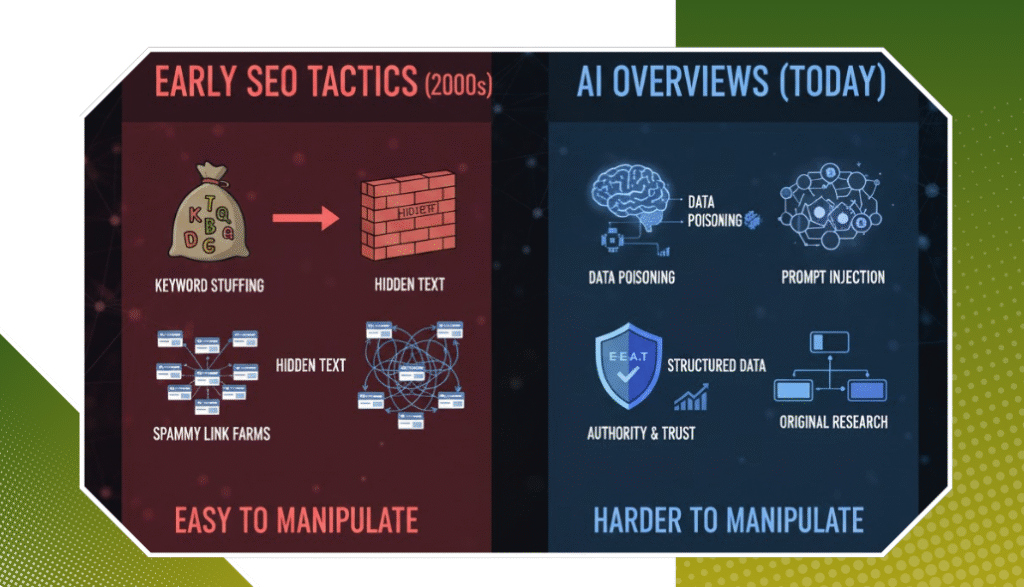A well-optimised Shopify store attracts targeted organic traffic without ongoing advertising costs. This sustainable approach translates into higher search engine rankings, increased organic traffic, better conversion rates, improved brand visibility, and long-term business growth.
This comprehensive SEO checklist covers essential elements to optimise your Shopify store technical setup fundamentals, on-page optimisation strategies, off-page authority building, local SEO tactics, and performance monitoring tools.
Whether you’re launching a new store or improving an existing one, implementing these proven SEO practices helps you compete effectively in the digital marketplace and drives sustainable growth for your business.
Technical SEO Essentials for Shopify Stores
A solid technical foundation sets successful Shopify stores apart from their competitors. Let’s dive into the essential technical SEO elements your store needs.
Custom Domain Setup
A custom domain adds credibility to your brand and helps build trust with customers. Replace the default .myshopify.com domain with your branded domain name through your Shopify admin panel.
Analytics & Performance Tracking
- Install Google Analytics 4 for detailed visitor insights
- Set up Google Search Console to monitor search performance
- Connect both tools to track user behaviour and search visibility
Mobile-First Optimisation
75% of Shopify store traffic comes from mobile devices. Select a mobile-ready theme and test your store’s responsiveness across different screen sizes using Google’s Mobile-Friendly Test tool.
Speed & Image Optimisation
- Convert images to the Webp format for faster loading
- Resize product images to optimal dimensions
- Add descriptive alt text with target keywords
- Include image sitemaps for better indexing
Core Web Vitals
Improve these key metrics for better rankings:
- Largest Contentful Paint (LCP): Under 2.5 seconds
- First Input Delay (FID): Under 100 milliseconds
- Cumulative Layout Shift (CLS): Under 0.1
Structured Data Implementation
Add JSON-LD markup to product pages for enhanced search results:
- Product prices
- Availability status
- Review ratings
- Product descriptions
Regular technical audits help identify broken links and maintain site health. Use Shopify’s built-in redirects feature to manage URL changes and preserve link equity.
On-Page SEO Strategies for Higher Rankings
Effective on-page SEO transforms your Shopify store into a search engine magnet. Let’s dive into proven strategies that boost your rankings.
Strategic Keyword Research
Research tools like Moz, Ahrefs, or Semrush help identify valuable keywords for your niche. Map these keywords based on user intent:
- Informational Intent: “how to style leather boots”
- Transactional Intent: “buy leather boots online”
Metadata Optimisation
Each product page needs these optimised elements:
- Page Titles: Product Name | Brand Name (60 characters max)
- Meta Descriptions: Compelling product summary with key features (160 characters)
- H1 Headings: Clear, keyword-rich product names
- URL Structure: yourstore.com/products/leather-boots-black
Content Enhancement
Create unique product descriptions that sell:
- 300+ words of detailed product information
- Customer reviews integration
- FAQ sections addressing common queries
- Benefit-focused bullet points
- Size guides and care instructions
Duplicate Content Prevention
Implement these technical solutions:
- Canonical tags for variant products
- Noindex directives for filtered pages
- Unique descriptions for similar products
Strategic Content Distribution
Build a robust internal linking structure:
- Cross-link related products
- Create collection landing pages
- Maintain a regular blog schedule
- Link from blog posts to relevant products
- Add contextual links in product descriptions
Off-Page SEO Tactics to Boost Authority
Building authority for your Shopify store requires strategic off-page SEO efforts. Here’s how to strengthen your store’s presence beyond your website:
PR Outreach & Press Mentions
- Partner with industry journalists and bloggers to secure valuable media coverage
- Create newsworthy content about product launches, company milestones, or innovative features.
- Submit expert quotes and insights to platforms like HARO (Help a Reporter Out)
Guest Blogging Strategy
- Identify authoritative blogs in your niche that accept guest posts
- Create high-quality, informative content that provides value to their audience
- Include natural links back to relevant product pages or blog content
Skyscraper Link Building
- Research popular content in your industry
- Create significantly better, updated versions with fresh insights
- Reach out to websites linking to the original content
Social Media & Community Engagement
- Share valuable content on platforms where your target audience spends time
- Participate in relevant Facebook groups and Reddit communities
- Answer questions on Quora and industry forums
- Create shareable infographics and visual content
Brand Mention Monitoring
- Set up Google Alerts for your brand name
- Track unlinked mentions using tools like Ahrefs
- Contact website owners to convert mentions into backlinks
- Build relationships with influencers who discuss your products
Remember to track the quality of backlinks using metrics like Domain Authority and relevance to your niche. Focus on building relationships that generate natural, editorial links rather than pursuing quick, low-quality options.
Local SEO Optimisation
Running a physical Shopify store requires a targeted local SEO strategy to attract nearby customers. A well-optimised local presence helps your store appear in “near me” searches and Google Maps results.
Google Business Profile Setup
- Create a detailed business profile with accurate NAP (Name, Address, Phone)
- Add high-quality store photos and virtual tours
- Select relevant business categories
- Include store hours and special holiday schedules
- Respond to customer reviews promptly
- Post regular updates about promotions and events
Local Directory Listings
- List your store on popular platforms:
- Yelp
- Yellow Pages
- Better Business Bureau
- Local Chamber of Commerce
- Industry-specific directories
- Maintain consistent NAP information across all listings
- Include store-specific details like parking availability and accessibility features
Local Content Optimisation
- Create location-specific pages for each store branch
- Add embedded Google Maps to store location pages
- Include local landmarks and directions in store descriptions
- Use location-based keywords naturally in content
- Add local schema markup to help search engines understand your physical presence
A strong local SEO strategy connects online visibility with foot traffic, making your Shopify store discoverable to potential customers in your area. Regular updates to your business listings and active engagement with local customers strengthen your local search presence.
Essential SEO Tools & Performance Monitoring
Regular performance tracking helps identify opportunities and issues in your Shopify store’s SEO strategy. Here are the essential tools for effective monitoring:
Google Search Console
Google Search Console is a free tool provided by Google that allows you to monitor and optimise your website’s presence in search results. Here are some key features of Google Search Console that can help with your SEO performance tracking:
- Monitor search performance metrics like impressions, clicks, and average position
- Track mobile usability problems to make sure your site is mobile-friendly
- Detect crawl errors and index issues which can impact your website’s visibility
- Look at click-through rates for various pages to see how well they rank in search results
- Examine traffic search queries to your website and find new keyword prospects
Keyword Tracking Tools
In addition to Google Search Console, using dedicated keyword tracking tools can provide more in-depth insights into your SEO performance. Here are some popular keyword tracking tools you can consider:
- Ahrefs Rank Tracker: Comprehensive rank monitoring with competitor analysis features
- Ubersuggest: Budget-friendly option for tracking keyword positions and getting additional SEO insights
These tools offer features such as monitoring keyword trends in different locations, monitoring SERP feature opportunities, and setting up custom tracking intervals based on your needs.
By combining the data from Google Search Console with insights from keyword tracking tools, you can gain a holistic view of your SEO performance and make informed decisions to improve it.
Keep in mind, regular monitoring is the key! By regularly monitoring your search performance metrics, observing issues or opportunities, and adjusting your SEO strategy in response, you can maintain your Shopify store with healthy search visibility.
Additional Tips for Sustained SEO Success on Shopify
Boost your Shopify store’s SEO performance with these proven optimisation techniques:
- Create clean URLS that include target keywords naturally
- Example: /blue-cotton-t-shirt instead of /product-123456
- Remove unnecessary parameters and numbers
- Implement advanced schema markup for enhanced search visibility
- Product pricing
- Stock availability
- Customer ratings
- Delivery information
Speed Optimisation Priorities:
- Compress all media files
- Enable browser caching
- Minimise code
- Target 0-4 second load time on mobile devices
User Experience Best Practices:
- Design mobile-first layouts
- Add clear call-to-action buttons
- Include high-quality product images
- Create intuitive navigation menus
- Display prominent search functionality
These optimisation strategies help create a solid foundation for long-term SEO success while maintaining a user-friendly shopping experience.
Conclusion
By using this detailed Shopify SEO checklist, you can prepare your store to be a success in the competitive e-commerce landscape. With a thoughtful approach to continuous SEO optimisation, your Shopify store can compete with established online stores like Amazon and Etsy.
The most important factor is consistent implementation – from resolving technical problems to producing quality content and acquiring backlinks. All of these things work in conjunction with one another to build a solid foundation for long-term organic growth.
Ready to take your Shopify store’s SEO to the next level? Our team at Rankingeek specialises in helping store owners like you achieve higher rankings and increased organic traffic. Contact us today to discover how we can optimise your store’s performance in search results.




